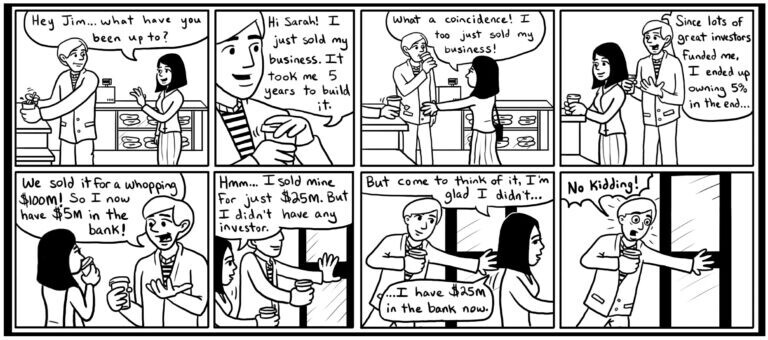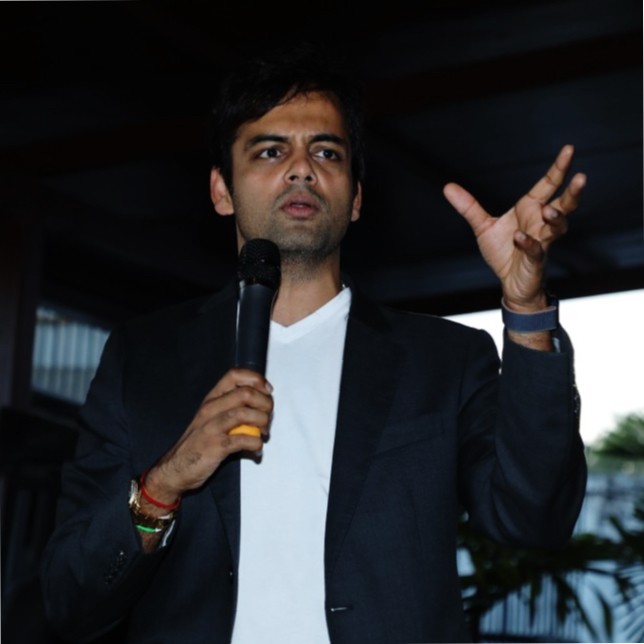Best of Bootstrapping: Bootstrapped with Freemium and Free Trials to $13M

If you haven’t already, please study our Bootstrapping Course and Investor Introductions page.
When we spoke in 2016, SurveyGizmo Co-founder Christian Vanek had bootstrapped the company to $13 million from Boulder, Colorado. He experimented with both freemium and free trial, and managed to monetize nicely. The company is now named Alchemer.
Sramana Mitra: Let’s start at the very beginning of your journey. Where are you from? Where were you born, raised, and in what kind of background?
Christian Vanek: I’m from upstate New York originally. I was born in 1977. Honestly, I moved around quite a bit. I never went to the same high school for more than a couple of years. In the end, I ended up in Massachusetts. After high school, I had no idea what to do with my life. I was not the best student ever. The beginning of my journey was probably when I decided to do a year of service for AmeriCorps as part of an urban peace corps that had started in Boston and spread around the United States. Through working in the homeless shelter there and building a software package to help manage clothing and service distribution, I got my hands dirty and started getting the bug of building software for other people.
Featured Videos
Thought Leaders in Cloud Computing: Amit Jain, Chief Product Officer, ServiceMax (Part 5)
Sramana Mitra: How much of this industry do you think has a solution?
Amit Jain: I’ll put it this way. Our enterprise customers also grow by acquisition. There are also inherent technical debts as well. It’s a herculean task for these companies to have a uniform technology strategy. Maybe 10 different ERP and homegrown field services.
A lot of these companies have a solution in place. Typically, the smaller ones have paper and pencil solutions and a lot of homegrown IT solutions as well. The point is how and when they’ll evolve into solutions such as ServiceMax. We think that there are enough proof points in the market from an ROI perspective for these companies to go in more aggressively now versus five to seven years ago.
>>>1Mby1M Virtual Accelerator Investor Forum: With Anirudh Damani, Managing Partner at Artha Venture Fund (Part 1)

Anirudh Damani is the Managing Partner at Artha Venture Fund. We have a terrific discussion on the Indian Startup Ecosystem and its trends.
Sramana Mitra: Let’s get you acquainted with the audience. Tell us a bit about Artha and your background.
Anirudh Damani: I have had a very interesting journey to becoming a venture capitalist. I started out as a door-to-door salesman in Texas. During my first seven months at the job, I knocked on a hundred doors a day. I was responsible for selling long-term energy power contracts to homeowners in West Texas.
>>>Video FAQs
Can 1M/1M Help Me Raise Money?
How Does 1M/1M Democratize Entrepreneurship Education?
How Does 1M/1M Democratize Management Consulting?
When Is The Right Time To Join 1M/1M?
Can 1M/1M Help Me With Business Development?
Can 1M/1M Help Me With Market Sizing?
Can 1M/1M Help Me Validate My Product?
Will I Have Private 1-on-1 Sessions In 1M/1M?
How Does 1M/1M Help Entrepreneurs Connect With Silicon Valley?
Mentoring or Consulting?
Why Does 1M/1M Charge $1000 a Year?
Why Does 1M/1M Partner With Local Organizations?
Why Don\’t Mentoring Networks Work?
Why Is It Important To Study With 1M/1M Now?
Dan Stewart Story
Vikrant Mathur Story
Best of Bootstrapping: Bootstrapped RushOrderTees to $23M

If you haven’t already, please study our Bootstrapping Course and Investor Introductions page.
From setting up a printing machine in the dining room to $23 million in revenue when we spoke in 2016, RushOrderTees Co-founder CEO Michael Nemeroff’s journey is one of steady, diligent execution.
Sramana Mitra: Let’s start at the very beginning of your journey. Where are you from? Where were your born, raised, and in what kind of background?
Michael Nemeroff: I was born and raised right outside Philadelphia. That’s where I’ve lived my whole life. It all started in high school. My parents were entrepreneurs. They owned a clothing line. It’s a lot different from what we do today.
Cloud Stocks: Analysis of CrowdStrike’s Reposify Acquisition

According to a recent report, the global endpoint security market is expected to grow at 12% CAGR from $14.63 billion in 2021 to $28.29 billion by 2027. Leading player CrowdStrike (NASDAQ: CRWD) recently announced stellar quarterly results as it continues to acquire in the space.
>>>Thought Leaders in Cloud Computing: Amit Jain, Chief Product Officer, ServiceMax (Part 4)
Sramana Mitra: I’m seeing it everywhere right now. The investors are talking about it. They want to see vertical cloud products. Your insights are very timely. What are the open problems from where you sit? ServiceMax has achieved quite a bit of scale. What is your current ARR?
Amit Jain: We’re over $150 million ARR.
Sramana Mitra: I haven’t followed the recent state of the company. Are you public?
>>>Catching Up On Readings: Fast Unicorn Faders
This feature from Crunchbase News looks at how startups that quickly rise to unicorn status, especially in sectors like scooters and instant grocery delivery, don’t sustain their high valuations. For this week’s posts, click on the paragraph links.
>>>Thought Leaders in Cloud Computing: Amit Jain, Chief Product Officer, ServiceMax (Part 3)
Sramana Mitra: Have Zendesk and Freshworks put in field services or are they integrating with other field service solutions?
Amit Jain: I don’t know of a solution from Zendesk and Freshworks specifically. The customer profile for them tends to be more mid-market versus our enterprise focus. We don’t have specific integrations into those systems.
Sramana Mitra: Your primary source of a help desk solution is all Salesforce-based?
>>>